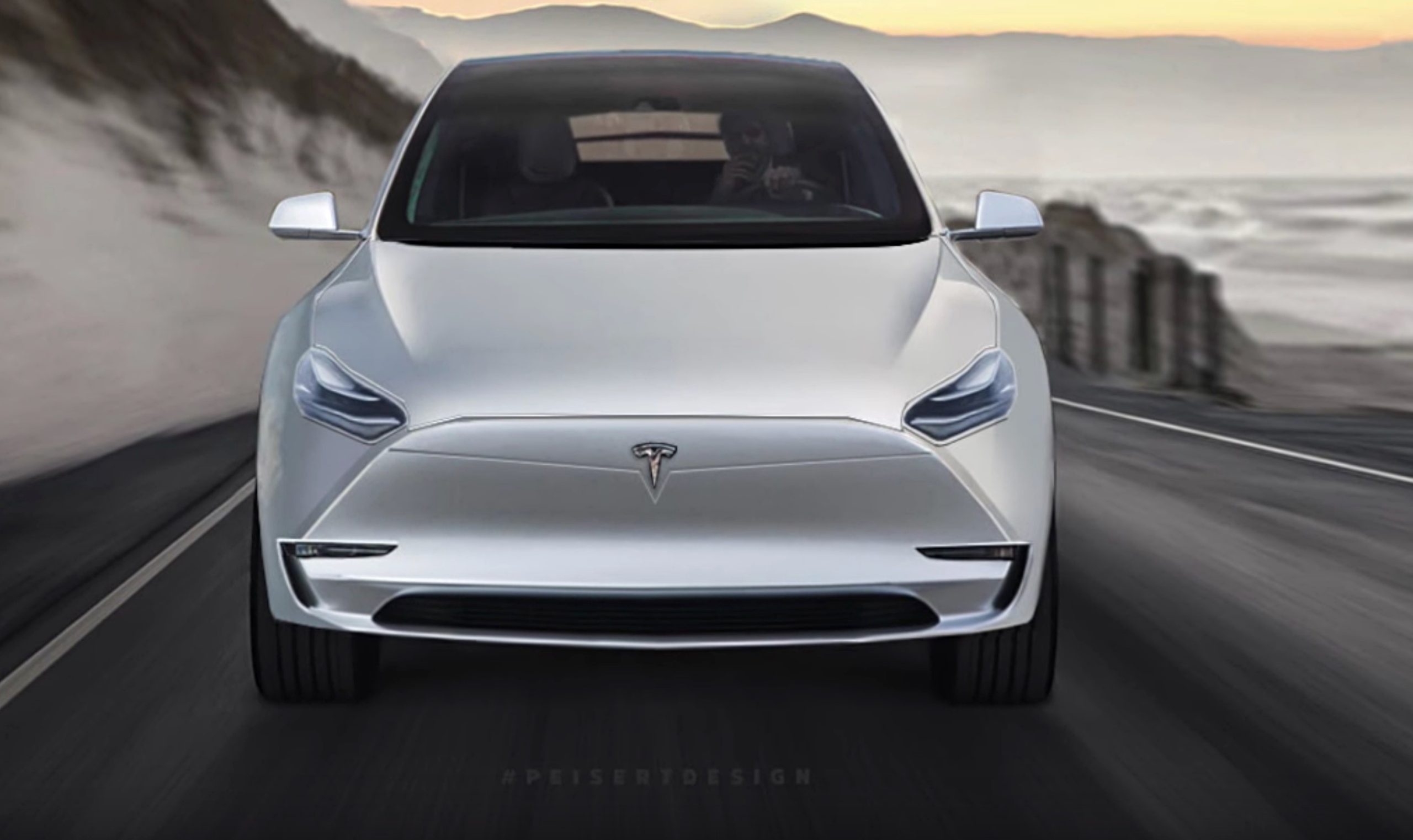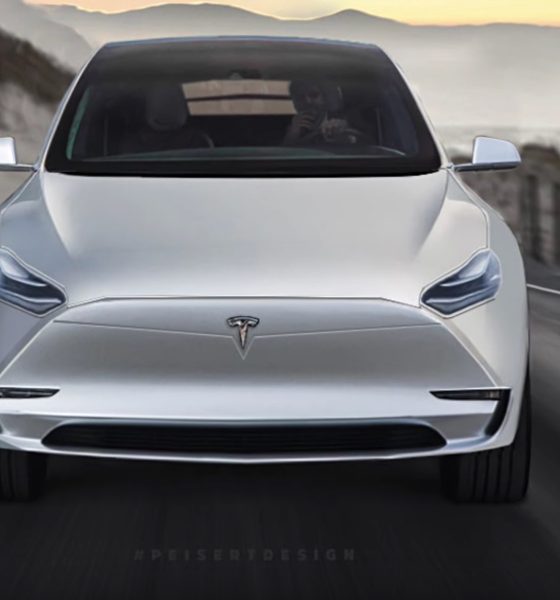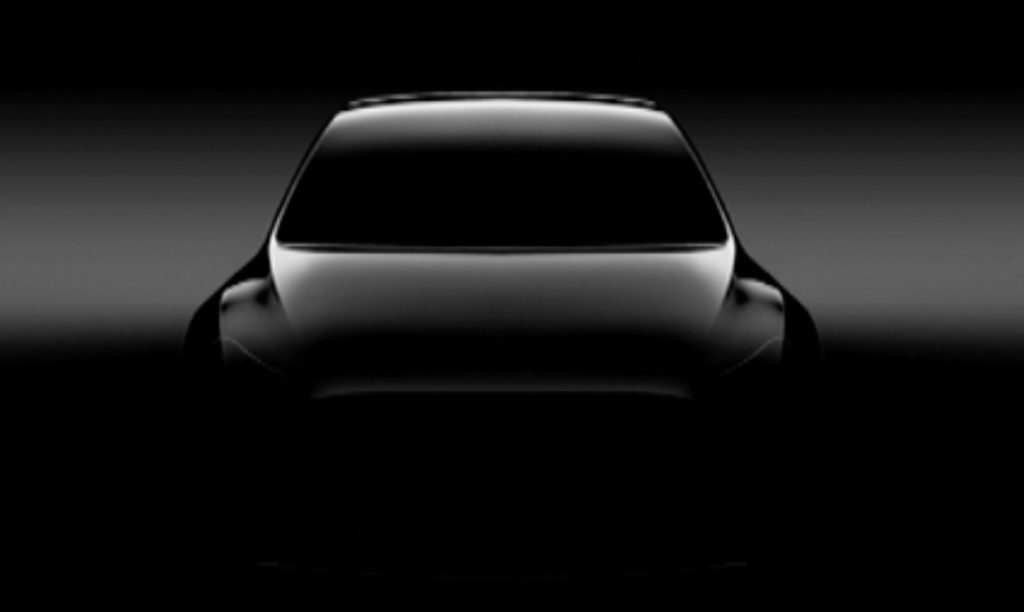

Investor's Corner
Tesla to reveal Model Y production plans in late 2018, says Elon Musk
Tesla CEO Elon Musk confirmed on Wednesday’s Q4 earnings call that the company will begin making capital investments on the Model Y compact SUV sometime in the second half of 2018.
Musk reaffirmed his position that the Model Y would be created with efficiency and rapid production in mind, and even simpler to manufacture than the Model 3.
“We are going to make some capital investments towards the end of this year related to Model Y. I don’t want to jump the gun on those, but I think we’ve got a good plan. I’m pretty excited about how we’re designing Model Y. It’s really taking a lot of lessons learned from Model 3 and saying how do we design something to be easy to manufacture instead of how to manufacture or difficult, really.” Musk said during the Q4 2017 earnings call.
A welcome update to the compact all-electric SUV was further provided by the Musk, stating that announcements for the Model Y would likely happen late in the third or fourth quarter, including details on where the electric car would be manufactured.
“I really think it’s going to be pretty great and pretty scalable for Model Y. But we are going to, as you suspect, need to make some capital investments in the second half of this year, really late Q3, Q4 for Model Y. But I think we want to wait probably three to six months before announcing any definitive plans on production location and the details associated with that.” said Musk.
Though the serial tech entrepreneur did not drop any clues this time around on where Model Y might be manufactured, Musk had previously mentioned that Model Y is expected to begin production in 2020, and aimed at the Chinese market to start.
“It’s sort of a rough target of start of production in about three years and it would be serving the China market and perhaps some other countries in the region and that’s really the intent,” said Musk in last year’s Q3 earnings call to analysts.
“[Tesla] won’t be making Model S and Model X, but we’ll be making probably Model 3, probably Model Y primarily for the local Chinese market and it’s really the only way to make the cars affordable in China, but it’s three years out, so.”

Elon Musk teases a rendering of a Tesla Model Y during the company’s annual shareholder meeting in 2017.
Built on the Model 3 platform, the Model Y would be marketed as a crossover SUV, competing with the leaders in the field such as the Subaru Outback, Toyota Rav4, and the Honda CR-V. Considering the huge demand for crossover SUVs on the automotive market, Tesla expects the Model Y to be one of its most popular offerings, ultimately helping the company to achieve its goal of producing 1 million cars per year in 2020.
Just like the Model 3, the Model Y would feature a number of new innovations for the electric car maker, including a new “flex circuit,” a wiring system that would drastically lower the number of wires needed for the vehicle. The Model 3 currently utilizes 1.5 km of wiring, which is already significantly less than the 3 km of wires used in the Model S and X. The Model Y, on the other hand, will only use 100 m of wiring, for a 95% reduction over the Model 3.

Investor's Corner
Tesla stock closes at all-time high on heels of Robotaxi progress

Tesla stock (NASDAQ: TSLA) closed at an all-time high on Tuesday, jumping over 3 percent during the day and finishing at $489.88.
The price beats the previous record close, which was $479.86.
Shares have had a crazy year, dipping more than 40 percent from the start of the year. The stock then started to recover once again around late April, when its price started to climb back up from the low $200 level.
This week, Tesla started to climb toward its highest levels ever, as it was revealed on Sunday that the company was testing driverless Robotaxis in Austin. The spike in value pushed the company’s valuation to $1.63 trillion.
Tesla Robotaxi goes driverless as Musk confirms Safety Monitor removal testing
It is the seventh-most valuable company on the market currently, trailing Nvidia, Apple, Alphabet (Google), Microsoft, Amazon, and Meta.
Shares closed up $14.57 today, up over 3 percent.
The stock has gone through a lot this year, as previously mentioned. Shares tumbled in Q1 due to CEO Elon Musk’s involvement with the Department of Government Efficiency (DOGE), which pulled his attention away from his companies and left a major overhang on their valuations.
However, things started to rebound halfway through the year, and as the government started to phase out the $7,500 tax credit, demand spiked as consumers tried to take advantage of it.
Q3 deliveries were the highest in company history, and Tesla responded to the loss of the tax credit with the launch of the Model 3 and Model Y Standard.
Additionally, analysts have announced high expectations this week for the company on Wall Street as Robotaxi continues to be the focus. With autonomy within Tesla’s sights, things are moving in the direction of Robotaxi being a major catalyst for growth on the Street in the coming year.
Elon Musk
Tesla needs to come through on this one Robotaxi metric, analyst says
“We think the key focus from here will be how fast Tesla can scale driverless operations (including if Tesla’s approach to software/hardware allows it to scale significantly faster than competitors, as the company has argued), and on profitability.”

Tesla needs to come through on this one Robotaxi metric, Mark Delaney of Goldman Sachs says.
Tesla is in the process of rolling out its Robotaxi platform to areas outside of Austin and the California Bay Area. It has plans to launch in five additional cities, including Houston, Dallas, Miami, Las Vegas, and Phoenix.
However, the company’s expansion is not what the focus needs to be, according to Delaney. It’s the speed of deployment.
The analyst said:
“We think the key focus from here will be how fast Tesla can scale driverless operations (including if Tesla’s approach to software/hardware allows it to scale significantly faster than competitors, as the company has argued), and on profitability.”
Profitability will come as the Robotaxi fleet expands. Making that money will be dependent on when Tesla can initiate rides in more areas, giving more customers access to the program.
There are some additional things that the company needs to make happen ahead of the major Robotaxi expansion, one of those things is launching driverless rides in Austin, the first city in which it launched the program.
This week, Tesla started testing driverless Robotaxi rides in Austin, as two different Model Y units were spotted with no occupants, a huge step in the company’s plans for the ride-sharing platform.
Tesla Robotaxi goes driverless as Musk confirms Safety Monitor removal testing
CEO Elon Musk has been hoping to remove Safety Monitors from Robotaxis in Austin for several months, first mentioning the plan to have them out by the end of 2025 in September. He confirmed on Sunday that Tesla had officially removed vehicle occupants and started testing truly unsupervised rides.
Although Safety Monitors in Austin have been sitting in the passenger’s seat, they have still had the ability to override things in case of an emergency. After all, the ultimate goal was safety and avoiding any accidents or injuries.
Goldman Sachs reiterated its ‘Neutral’ rating and its $400 price target. Delaney said, “Tesla is making progress with its autonomous technology,” and recent developments make it evident that this is true.
Investor's Corner
Tesla gets bold Robotaxi prediction from Wall Street firm
Last week, Andrew Percoco took over Tesla analysis for Morgan Stanley from Adam Jonas, who covered the stock for years. Percoco seems to be less optimistic and bullish on Tesla shares, while still being fair and balanced in his analysis.

Tesla (NASDAQ: TSLA) received a bold Robotaxi prediction from Morgan Stanley, which anticipates a dramatic increase in the size of the company’s autonomous ride-hailing suite in the coming years.
Last week, Andrew Percoco took over Tesla analysis for Morgan Stanley from Adam Jonas, who covered the stock for years. Percoco seems to be less optimistic and bullish on Tesla shares, while still being fair and balanced in his analysis.
Percoco dug into the Robotaxi fleet and its expansion in the coming years in his latest note, released on Tuesday. The firm expects Tesla to increase the Robotaxi fleet size to 1,000 vehicles in 2026. However, that’s small-scale compared to what they expect from Tesla in a decade.
Tesla expands Robotaxi app access once again, this time on a global scale
By 2035, Morgan Stanley believes there will be one million Robotaxis on the road across multiple cities, a major jump and a considerable fleet size. We assume this means the fleet of vehicles Tesla will operate internally, and not including passenger-owned vehicles that could be added through software updates.
He also listed three specific catalysts that investors should pay attention to, as these will represent the company being on track to achieve its Robotaxi dreams:
- Opening Robotaxi to the public without a Safety Monitor. Timing is unclear, but it appears that Tesla is getting closer by the day.
- Improvement in safety metrics without the Safety Monitor. Tesla’s ability to improve its safety metrics as it scales miles driven without the Safety Monitor is imperative as it looks to scale in new states and cities in 2026.
- Cybercab start of production, targeted for April 2026. Tesla’s Cybercab is a purpose-built vehicle (no steering wheel or pedals, only two seats) that is expected to be produced through its state-of-the-art unboxed manufacturing process, offering further cost reductions and thus accelerating adoption over time.
Robotaxi stands to be one of Tesla’s most significant revenue contributors, especially as the company plans to continue expanding its ride-hailing service across the world in the coming years.
Its current deployment strategy is controlled and conservative to avoid any drastic and potentially program-ruining incidents.
So far, the program, which is active in Austin and the California Bay Area, has been widely successful.








